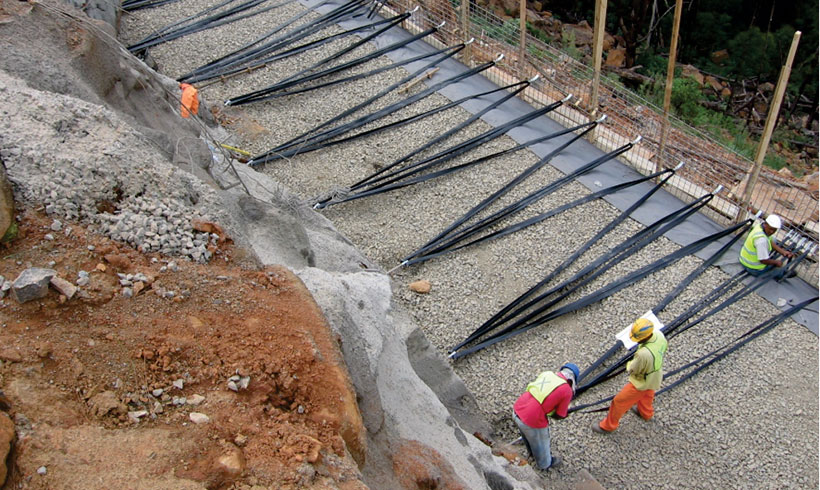The smart Trick of Geotechnical Engineering For Construction Projects That Nobody is Talking About
Table of ContentsGeotechnical Engineering For Construction Projects Fundamentals ExplainedGeotechnical Engineering For Construction Projects Fundamentals ExplainedThe 5-Minute Rule for Geotechnical Engineering For Construction ProjectsExcitement About Geotechnical Engineering For Construction ProjectsGetting The Geotechnical Engineering For Construction Projects To WorkWhat Does Geotechnical Engineering For Construction Projects Mean?The Only Guide to Geotechnical Engineering For Construction Projects
"A record could be 25 years old, so the inquiry is: Has there been a structure on that website because they've done the record? What is around the website since wasn't there at that time?" stated Cheryl - Geotechnical Engineering for Construction Projects. "So, that is where I begin." Even when it comes to a reconstruct, a geotechnical report carried out ten years previously is likely too old."It's not our place to inform them what they have to do, yet it is within our right to [figure out the threat] based upon how they're mosting likely to progress," she claimed. Both Cheryl and Joseph shared instances of red flags and failings associated with geotechnical concerns. Cheryl noted that, throughout building and construction of the LRT passage in Ottawa (not a job she was involved with), an enormous sinkhole opened up on Rideau Street, likely from the instability of damp, sandy soil in the location.
The Buzz on Geotechnical Engineering For Construction Projects
"They were unable to manage the groundwater and it started permeating right into the foundation walls during the course of construction," stated Joseph. He added that, when building contractors and developers prepare to make use of an unusual or unusual building and construction method, this might be a red flag on a geotechnical record - Geotechnical Engineering for Construction Projects. With any geotechnical report, Joseph stressed: "It's extremely important for programmers and contractors to take another look at and abide with the recommendations."Loss control specialists are beneficial partners that can help developers comprehend the importance of a geotechnical record and take steps to finish them
Geotechnical engineering is a branch of civil design; however, it includes utilizing scientific techniques and concepts to gather and interpret the physical residential or commercial properties of the ground. Geotechnical designers are associated with all stages of the design of frameworks, from principle to construction. Their work is vital in the design and preparation procedure as they evaluate the honesty of soil, clay, silt, sand, and rock, before building and construction beginning.
Our Geotechnical Engineering For Construction Projects PDFs

Worldwide of construction and civil design, geotechnical engineering is a keystone technique that makes certain the safety, longevity, and sustainability of any task. Without a strong understanding of the soil, rock, and other planet products at a website, constructing dependable facilities would certainly be virtually difficult. At STS Geotechnics we strongly believe in the value of communicating the important duty the Geotechnical Design plays in contemporary construction, website development, and ecological stewardship.
Geotechnical designers evaluate dirt, rock, groundwater, and other subsurface problems to assess their viability for building and construction. This know-how allows them to predict how these materials will react to frameworks like buildings, roadways, dams, and bridges, aiding make certain safe and stable structures. Every building or facilities job counts on a structure that is safe and secure.
Geotechnical engineering assists avoid numerous ecological risks that might jeopardize both people and the atmosphere. With dirt analysis, designers can recognize potential concerns like landslides, dirt liquefaction, and disintegration threats.
Geotechnical Engineering For Construction Projects Fundamentals Explained
As an example, designers could develop projects that reduce the demand for extreme excavation or lessen land disturbance, adding to the preservation of all-natural environments and decreasing the carbon impact of building and construction tasks. Appropriate geotechnical examination can dramatically reduce construction expenses by determining possible issues before building and construction starts. Comprehending the subsurface conditions aids in picking the most effective structure kind and other structural elements, therefore preventing pricey redesigns and fixings.
They evaluate natural calamity risks Learn More Here like quakes, flooding, or typhoons and assist design structures that are gotten ready for these events. This strength is particularly important as climate adjustment causes much more constant and severe weather condition events.: Ensuring a stable foundation is essential for any type of structure. Geotechnical engineers evaluate dirt and rock conditions to suggest the most effective foundation design find more info for stability and long life.
The basic dictates that geotechnical website investigations follow an iterative procedure (illustrated listed below) in which the results of the examination are reviewed against the objective for which the investigation is being brought out with further examinations prepared as needed. Merely put, ground structure and problem can vary substantially even within a little site.
Projects that overlook this crucial service risk their growth cracking, leaning, sinking, slipping and potentially breaking down as the earth listed below it shifts. Experience dictates that a Geotechnical Engineer ought to be generated throughout the initial planning phases of any construction task. Only after that can their skills, know-how and referrals be utilized to stop building issues before they occur.
The Ultimate Guide To Geotechnical Engineering For Construction Projects
On the planet of building, every building bases on a structure which structure is constructed on the expertise of geotechnical engineering. Frequently unseen however undoubtedly essential, geotechnical engineering plays a critical role in guaranteeing the stability, safety, and longevity of structures. From skyscrapers to bridges, roadways to dams, the significance of geotechnical design can not be overemphasized.

The 5-Minute Rule for Geotechnical Engineering For Construction Projects
Incline security and Earth retention: In sloping or check sloped surface, maintaining slope stability is crucial to stop landslides, erosion, and soil motion. Geotechnical designers assess the stability of slopes and layout planet retention systems such as keeping walls or slope stablizing measures to reduce risks and make sure security. Ground enhancement strategies: In some instances, the dirt conditions at a construction site may be unsuitable for developing without previous therapy.
Before installing pipelines, tunnels, or below ground facilities, geotechnical designers examine soil problems and groundwater levels to make sure proper positioning and protect against potential threats such as dirt negotiation or pipeline damage. Construction material option: Dirt buildings affect the option of building and construction products and techniques. Geotechnical designers examine dirt attributes to determine the viability of materials for foundations, embankments, and earthworks.
A Biased View of Geotechnical Engineering For Construction Projects
By implementing proactive upkeep measures, engineers extend the lifespan of structures and guard against unforeseen issues. Finally, the value of geotechnical engineering in construction tasks can not be overstated. From making sure the security of foundations to handling ecological threats, geotechnical designers play an important function in every stage of the building and construction process.
Comments on “Geotechnical Engineering For Construction Projects - An Overview”